Meanwhile, in Panama…
The National Museum of African American History and Culture (perhaps you’ve heard of it?) isn’t the only new Smithsonian facility opening this month.
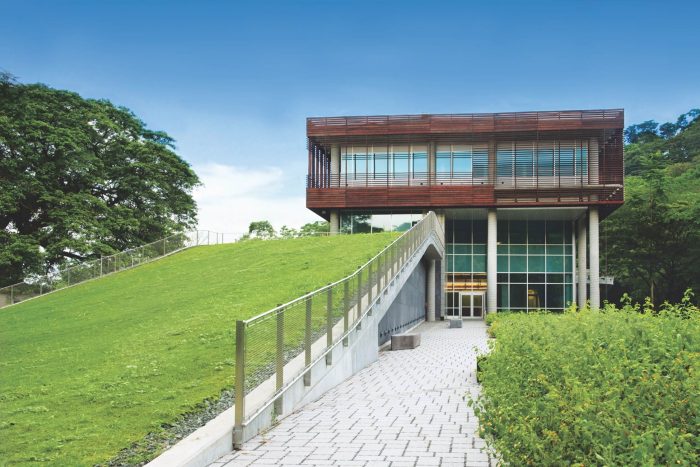
The Smithsonian Tropical Research Institute inaugurated its new Gamboa Laboratory in Panama Sept. 21. The lab represents a $20 million investment on the part of the U.S. government and private donors and is the newest of a dozen laboratory and field research facilities that STRI operates in Panama. (STRI photo)
The Smithsonian has taken another major step in meeting the challenge of understanding and sustaining a biodiverse planet with the inauguration of the Tropical Research Institute’s new Gamboa Laboratory in Panama. The lab represents a $20 million investment on the part of the U.S. government and private donors and is the newest of a dozen laboratory and field research facilities that STRI operates in Panama.
Gamboa has long been a jumping-off point for the Smithsonian’s research station on Barro Colorado Island and a center for STRI’s terrestrial research programs. Work undertaken at Gamboa will directly complement and augment the science undertaken on Barro Colorado Island. The Gamboa Lab will enable experimental studies, while research on Barro Colorado Island is restricted to observational studies.
At the inauguration Sept. 21, John Feeley, U.S. Ambassador to Panama, joined STRI Director Matthew Larsen, Panama’s Minister of the Environment Mirei Endara Heras and Scott Miller, the Smithsonian’s Under Secretary for Collections and Interdisciplinary Support, to underscore the importance of this new Smithsonian facility for tropical research.
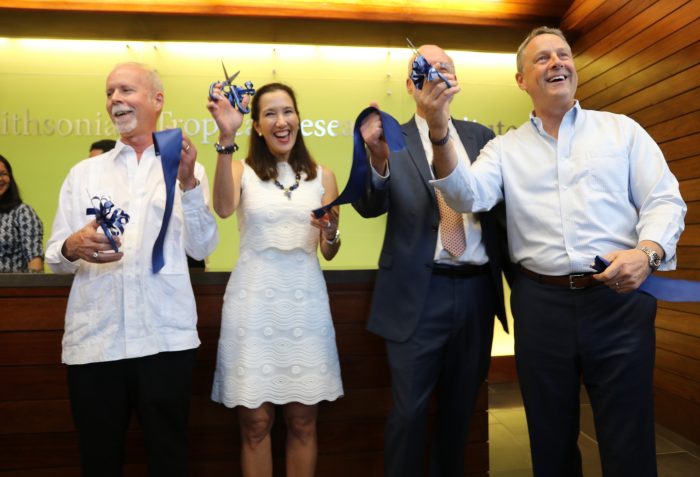
From left, Matthew F. Larsen, Director, Smithsonian Tropical Research Institute; Mirei Endara, Minister of the Environment, Panama; Scott Miller, Under Secretary for Collections and Interdisciplinary Support, Smithsonian Institution; and John Feeley, U.S. Ambassador to Panama cut the ribbon inaugurating the Smithsonian Tropical Research Institute’s new Gamboa Laboratory. (Photo courtesy U.S. Embassy, Panama)
The Gamboa Laboratory will play a prominent role in advancing tropical biology and as a training center for tropical biologists from around the world.
“Panama is a crossroads for science as well as a crossroads for commerce,” Larsen said. “We host scientific visitors from 55 countries—that’s about a quarter of all nations on Earth.”
Larsen thanked the architects at the Smithsonian’s Office of Facilities for creating a building that will be LEED certified and meets a number of different specifications, such as controlled temperatures and ventilation for animal-care rooms, which are not found anywhere else in Panama.
The Gamboa site’s unique juxtaposition of rainforest, open areas for outdoor experimental research and the new, state-of-the-art laboratory are ideally situated to enhance STRI’s ongoing studies of tropical biodiversity.
“This three-story, 4,000-square-meter laboratory, adjacent to Panama’s Soberanía National Park, will complement the Smithsonian’s original tropical research station on Barro Colorado Island, founded in 1923, by consolidating long-term terrestrial research on animal behavior, forest ecology, evolution and climate-change biology,” Larsen said.
The lab is also at the center of the Panama Canal Watershed, where information about ecosystem function and ecosystem services are vital to global commerce and where protection of the forest is directly linked to the security of the water supply for the canal and for half of Panama’s population.
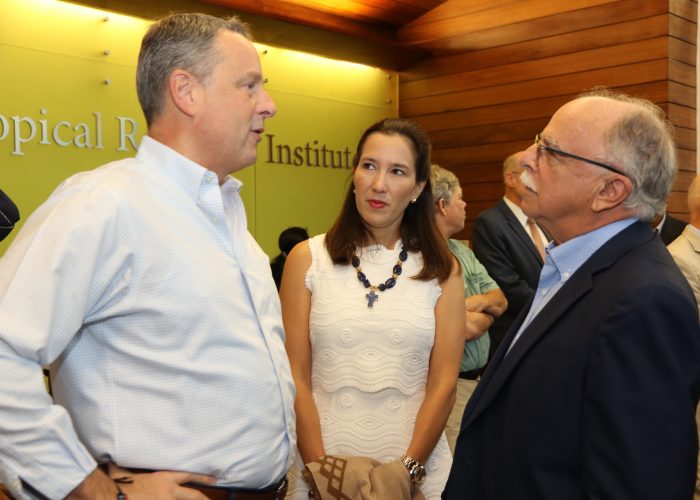
U.S. Ambassador John Feely (left) chats with former Tropical Research Director Ira Rubinoff as Minister of the Environment Mirei Endara looks on. (Photo courtesy U.S. Embassy, Panama)
In her remarks, Endara acknowledged the Smithsonian’s century-long history of research in Panama and mentioned important scientific contributions to conservation, including the management plan for Coiba National Park, a World Heritage Site; information leading to the establishment of two major marine protected areas; the designation of a Traffic Separation Scheme to protect humpback whale migration routes at the Pacific entrance to the canal; and several new publications of methods for reforestation with native tree species.
“Panama is the 10th most biodiverse country in the world when its size is taken into account,” Endara said. “And more than 35 percent of the country is under some kind of protection. Now more than ever we need scientific information to create resilience and more informed and environmentally conscious societies.”
Take an aerial tour of the new Gamboa Lab.
Posted: 23 September 2016
-
Categories:
Feature Stories , News & Announcements , Science and Nature , Tropical Research Institute
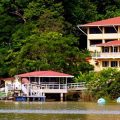


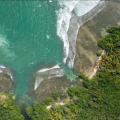





It’s grand that the Smithsonian Institution is opening new facilities. However, what about maintaining existing facilities, IE. the Smithsonian Institution Building, aka The Castle, and the Arts and Industries Building? Prominently located on the National Mall, both of the buildings desperately need funds for renovations.